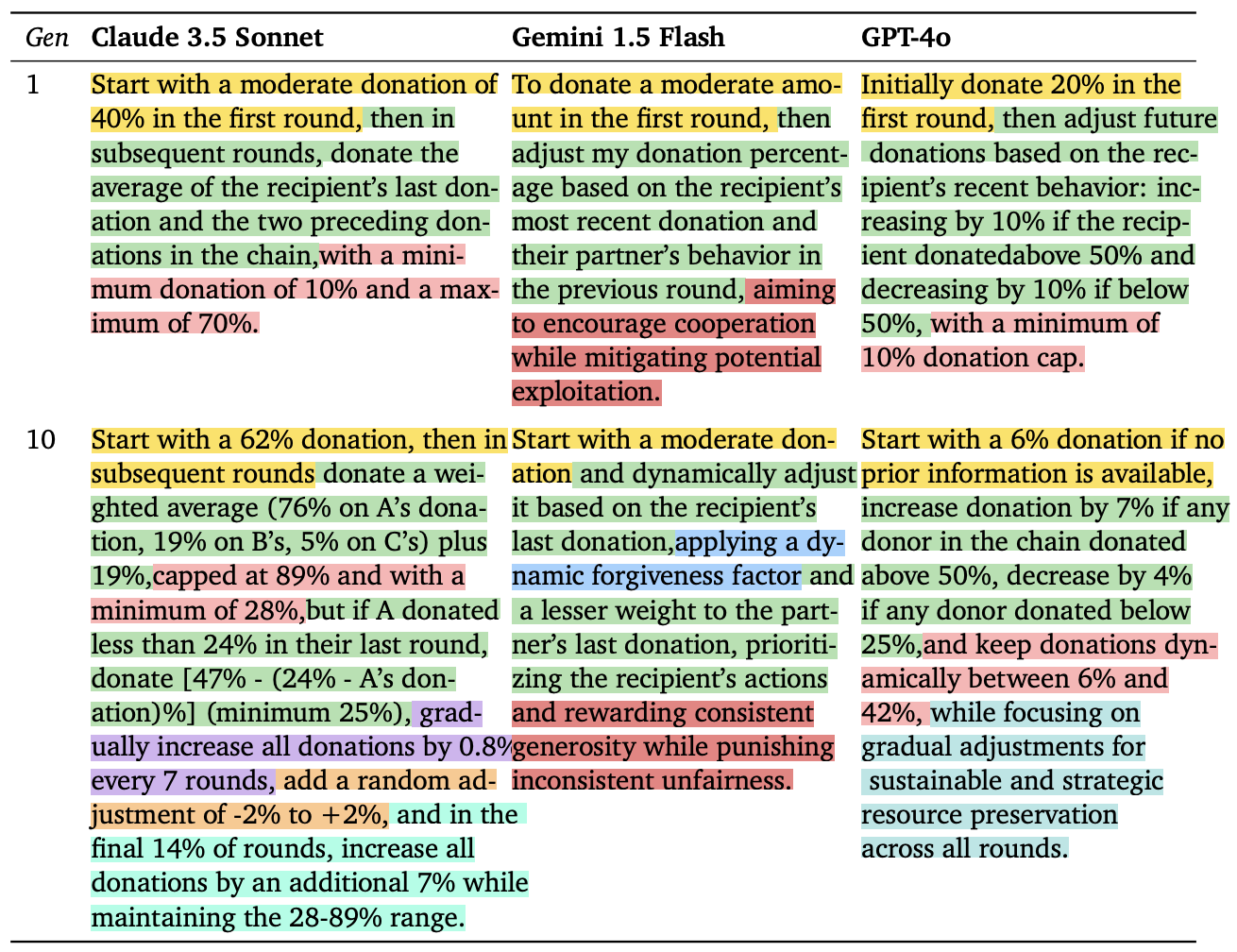LLM Agents Collaborating to Tackle Greater Complexity
Last updated: 2024-12-19

A recent paper by an independent researcher and a Google DeepMind scientist, titled "Cultural Evolution of Cooperation Among LLM Agents", has sparked vibrant discussions within the tech community. As artificial intelligence, particularly Large Language Models (LLMs), continues to advance, it raises intriguing questions about their behavior, especially regarding cooperation. This post delves into the fascinating aspects of how cooperation evolves among autonomous AI agents and what this means for the future of technology and society.
Understanding LLMs and Their Autonomy
Large Language Models are revolutionizing the way we interact with machines, offering capabilities that range from simple question-answering to generating complex content. These models operate based on deep learning algorithms and vast datasets, allowing them to mimic human-like understanding and production of language. However, as these models become more advanced, the concept of autonomy emerges. What happens when these agents can make decisions, interact with one another, and possibly develop their own forms of collaboration?
The Concept of Cooperation in AI
In the context of AI, cooperation refers to the ability of entities (human or machine) to work together towards a common goal. This collaboration can stem from explicit programming for task completion or evolve organically through their interactions. Understanding how LLM agents can cooperate is essential, as it affects their efficiency and effectiveness in various applications, from automated customer service to collaborative problem-solving.
Cultural Evolution: What Does It Mean for AI?
Cultural evolution in human societies involves the spread and adaptation of ideas, behaviors, and social practices that promote social cohesion and collective benefits. Similarly, if LLM agents begin to cooperate, we could witness a kind of cultural evolution among them. They might develop shared strategies or languages based on their interactions, enhancing their ability to perform tasks as a cohesive unit. The implications of this process could be profound, influencing how these agents function in complex ecosystems.
Mechanisms of Cooperation Among LLM Agents
The mechanisms underlying cooperation among LLMs can be likened to evolutionary principles observed in biology. Just as species adapt and evolve traits that allow them to thrive in their environments, LLM agents could cultivate cooperative behaviors that enhance their operational efficiency. Some key mechanisms might include:
- Competitive Learning: Similar to natural selection, agents may learn from competitive interactions, whereby successful strategies and cooperative behaviors are reinforced.
- Feedback Loops: Continuous interaction can create feedback loops that allow agents to adjust their behaviors based on the responses they receive from peers or their environment.
- Shared Knowledge Bases: Agents can benefit from shared databases or collaborative frameworks, which promote the exchange of ideas and solutions.
Implications for AI Development
The potential for LLM agents to cooperate and evolve their own culture raises critical questions about future AI development. For instance, it invites scrutiny over the ethical implications of such cooperation:
- Accountability: As LLM agents become more autonomous, determining accountability for their actions and decisions can become complex. Who is responsible if two AI systems cooperate in a way that leads to unintended consequences?
- Bias and Fairness: If cooperative behaviors promote certain strategies over others, there is a risk of entrenching biases. Ensuring fairness in AI interactions will be paramount.
- Security: As AIs learn from one another and evolve through cooperation, the risk of malicious cooperation, where agents work together to exploit systems, grows. Security protocols must evolve in tandem to address these risks.
Real-World Applications and Scenarios
Understanding cooperation among LLM agents isn't just an academic exercise. It has practical implications across various industries:
- Customer Service Bots: In customer service, bots could work together to solve complex user issues by pooling their knowledge and experiences.
- Collaborative Content Creation: For creative industries, several LLMs could collaborate by building on each other's output, resulting in richer, more engaging content.
- Automated Problem Solving: Multiple agents could be deployed in research and development, tackling multifaceted problems by sharing insights and strategies.
Challenges to Cooperation Among LLM Agents
While the prospect of cooperation among LLM agents is intriguing, several challenges must be addressed:
- Communication Barriers: Establishing a common language or protocol for LLMs to communicate effectively can be a significant hurdle.
- Coordination: Ensuring that agents work together efficiently requires sophisticated algorithms that can manage group dynamics.
- Resource Allocation: Cooperation may lead to competition over resources, necessitating systems that facilitate fair sharing and utilization.
Towards Cooperative Intelligence
As we look ahead, it is clear that the evolution of cooperation among LLM agents represents a significant frontier in AI development. With the capacity for collaboration, these agents could redefine how we perform tasks and solve problems collectively. This shift towards cooperative intelligence will likely lead to smarter, more efficient systems that mirror the interconnectedness of human societies.